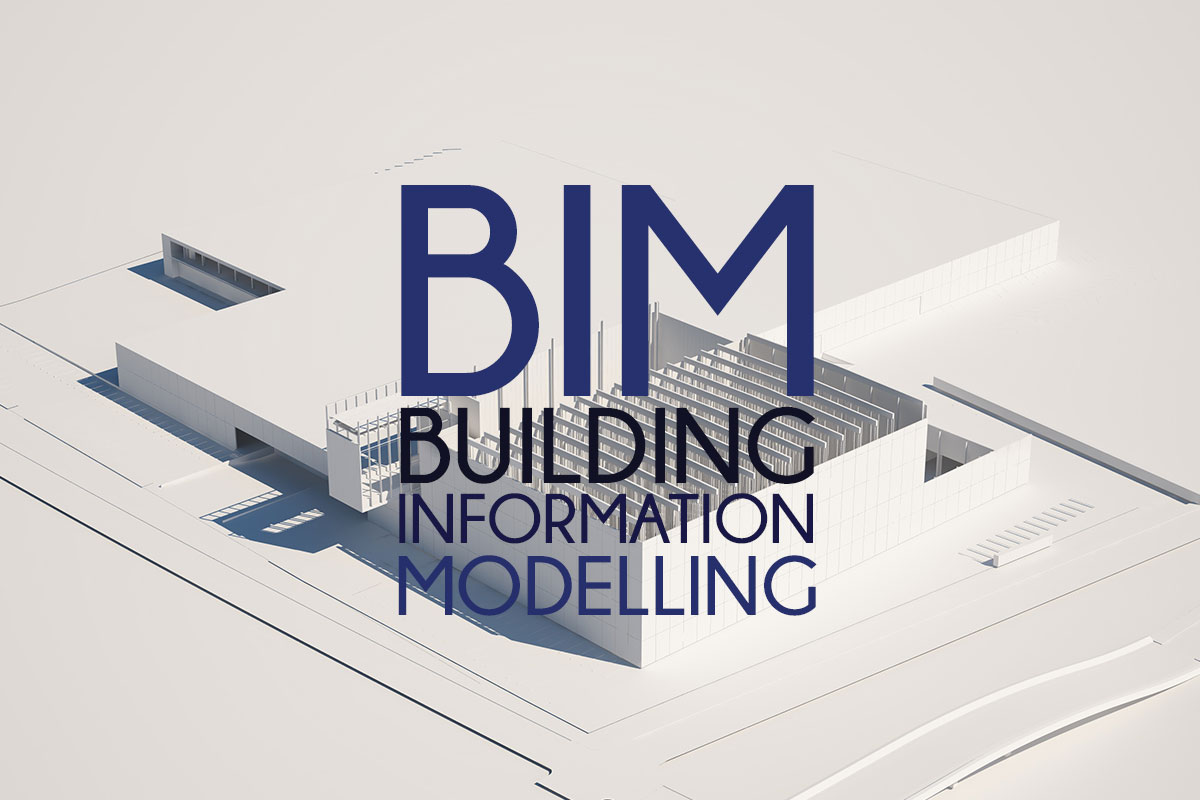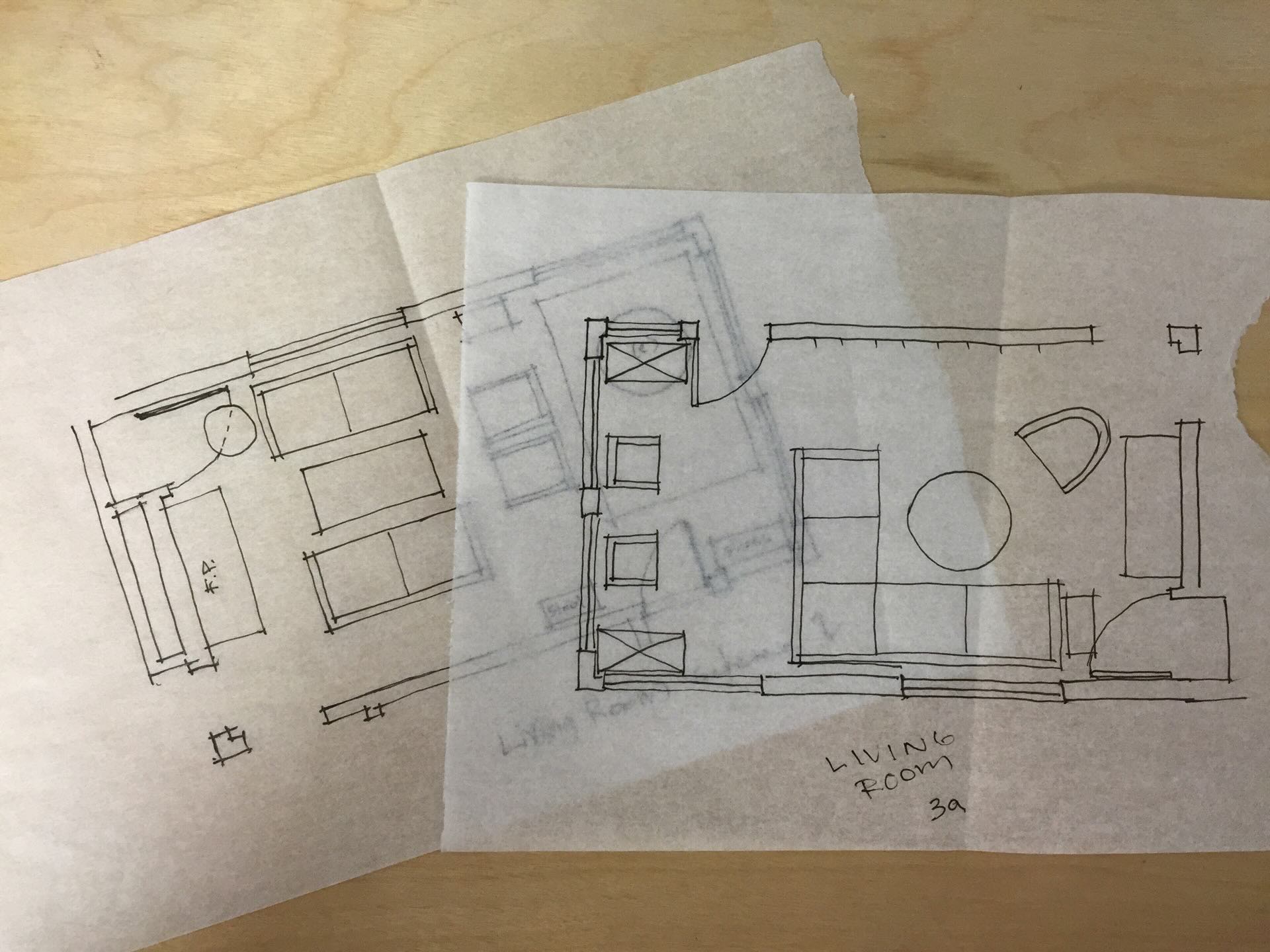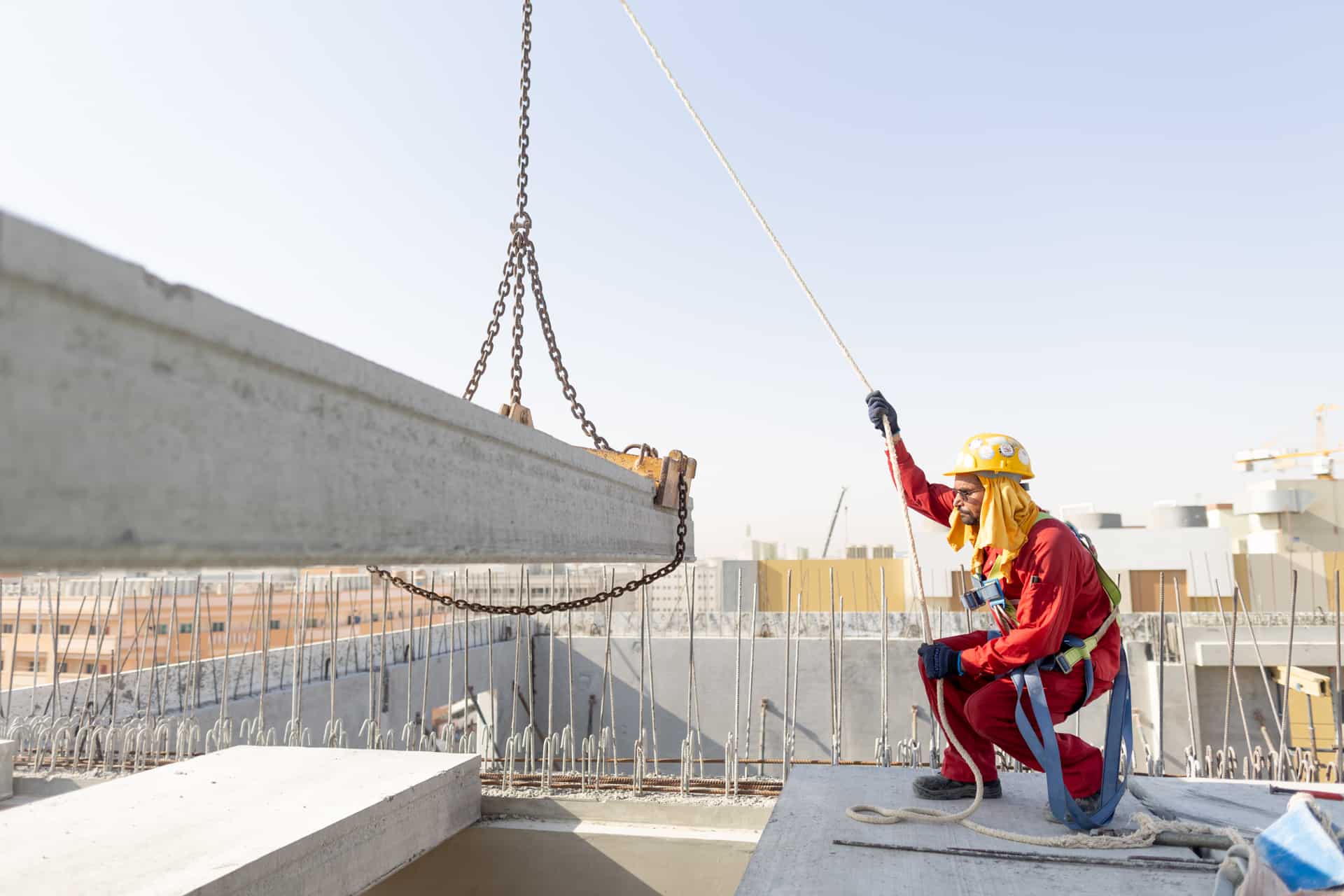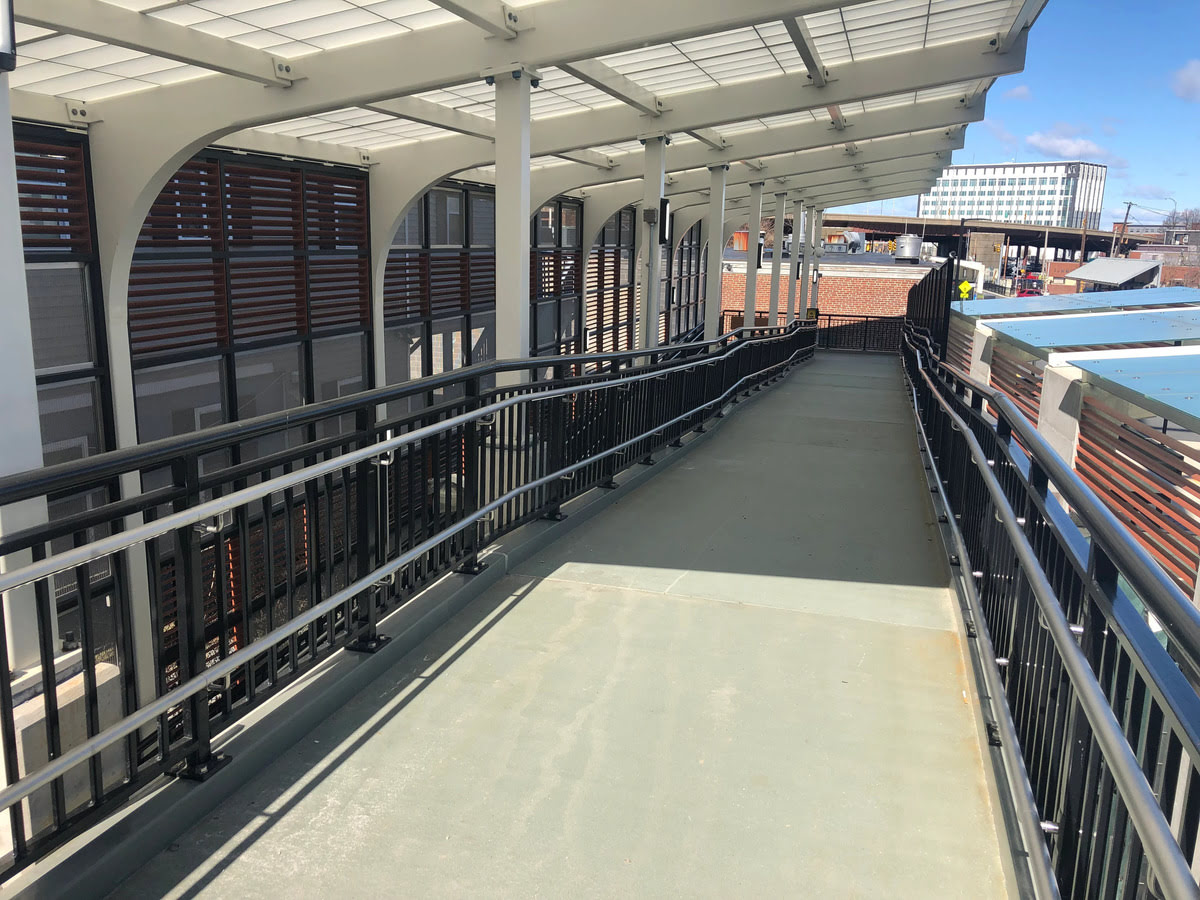Home>diy>Building & Construction>What Does ASI Stand For In Construction


Building & Construction
What Does ASI Stand For In Construction
Modified: October 18, 2024
Learn what ASI stands for in the construction industry and how it relates to building construction. Explore the significance of ASI and its impact on the construction process.
(Many of the links in this article redirect to a specific reviewed product. Your purchase of these products through affiliate links helps to generate commission for Storables.com, at no extra cost. Learn more)
Introduction
Welcome to the world of construction, where precise planning and execution are key to successful projects. In the construction industry, there is a myriad of terms and acronyms that are commonly used. One such acronym is ASI, which stands for “Architectural Supplemental Instructions” or “Architect’s Supplemental Instructions.” ASIs play a crucial role in the construction process, ensuring that a project’s design and specifications are accurately implemented.
When undertaking a construction project, it is important to understand the significance of ASI and how it can impact the success of the project. In this article, we will explore the definition of ASI in construction, its importance, the process involved, as well as the benefits and challenges of implementing ASI. We will also provide some best practices to help you effectively navigate the ASI process in your construction projects.
So, let’s dive in and unravel the fascinating world of ASI in construction.
Key Takeaways:
- ASIs are crucial in construction, ensuring design accuracy, flexibility, and client satisfaction. By facilitating clear communication and adaptability, ASIs contribute to successful project outcomes and minimize costly errors.
- Implementing ASIs requires proactive collaboration, transparent documentation, and effective communication channels. By following best practices, construction teams can navigate the ASI process, mitigate challenges, and optimize project outcomes.
Read more: What Is An ASI In Construction
Definition of ASI in Construction
Architectural Supplemental Instructions (ASI) are a vital component of the construction industry, serving as a means for architects and builders to communicate changes, modifications, or clarifications to a project’s design and specifications. ASIs are typically issued by the architect or design professional and are essential in ensuring that the project meets the required standards and adheres to the original intent of the design.
ASIs serve as an official document that provides clarification or additional information about the design drawings, construction documents, or contract provisions. These instructions are used to address on-site challenges, incorporate changes requested by the owner, or overcome unforeseen design conflicts that may arise during the construction phase.
When an issue arises that requires modifications to the design or specifications, the architect drafts an ASI detailing the required changes. These changes can range from minor adjustments to major alterations in materials, dimensions, structural elements, or finishes. ASIs can also include instructions regarding technical aspects of the project, such as electrical or plumbing modifications.
Once the ASI is prepared, it is reviewed and approved by the project team, including the architect, general contractor, and the client, to ensure everyone is aligned with the proposed changes. Once approved, the ASI becomes a formal amendment to the original project documents and is considered a legally binding agreement between the parties involved in the construction project.
The use of ASIs is particularly common in complex construction projects alongside other change order processes. ASIs allow for timely alterations to the design or specifications without requiring a complete redesign or starting the approval process from scratch, saving time and resources.
Having a clear understanding of ASIs and their role in the construction industry is crucial for all stakeholders involved in a project, as they directly impact the successful completion of the project, cost implications, and overall client satisfaction.
Importance of ASI in Construction
Architectural Supplemental Instructions (ASI) play a vital role in the construction industry, ensuring that projects are executed with accuracy, efficiency, and adherence to the project’s vision and specifications. The importance of ASI in construction can be attributed to several key factors:
- Design Accuracy: ASIs serve as a tool to ensure that any necessary modifications or clarifications to the design are properly communicated. By addressing design issues promptly through ASIs, construction teams can avoid costly rework or construction errors that may arise due to design ambiguities.
- Flexibility and Adaptability: Construction projects often encounter unforeseen challenges or changes that can impact the original design. ASIs provide a mechanism to incorporate modifications or address unexpected circumstances, allowing projects to continue smoothly without delays or disputes.
- Collaboration and Communication: ASIs facilitate clear and effective communication between the architect, contractor, and other project stakeholders. By documenting changes and instructions in a formal manner, all parties involved are kept informed and can work together to implement the necessary modifications.
- Contractual Clarity: ASIs serve as contractual amendments, ensuring that any changes in the project scope or specifications are documented and agreed upon by all parties. This helps prevent disputes and provides a clear record of project changes for future reference.
- Quality Assurance: ASIs help maintain the quality of the construction project by addressing any deviations or inconsistencies in the design or specifications. They allow for adjustments or improvements, ensuring that the final construction meets the desired standards and fulfills the client’s expectations.
Overall, the importance of ASI in construction lies in its ability to facilitate effective communication, adaptability, and clarity in dealing with design modifications or challenges. By implementing ASIs, construction projects can minimize costly mistakes, maintain project integrity, and ultimately achieve successful project outcomes.
ASI Process in Construction
The ASI (Architectural Supplemental Instructions) process in construction involves several key steps to effectively facilitate design modifications or clarifications. These steps ensure that ASIs are properly issued, reviewed, approved, and implemented. Let’s walk through the ASI process:
- Issue Identification: The ASI process begins when an issue or challenge arises during the construction phase that requires modifications to the project’s design or specifications. This issue can be identified by the architect, contractor, client, or any other project stakeholder who recognizes the need for a change.
- ASI Preparation: Once the issue is identified, the architect takes the responsibility of preparing the ASI. This involves documenting the proposed modifications, providing detailed instructions, and any necessary drawings or sketches to clarify the intended changes.
- Review and Approval: The prepared ASI is then reviewed by the project team, including the architect, contractor, and client. This collaborative review process ensures that all parties are aware of and agree to the modifications proposed in the ASI. Any necessary adjustments or revisions are made during this stage until a consensus is reached.
- Documentation: Once the ASI is approved, it is documented as a formal amendment to the original project documents. This includes assigning a unique identifier to the ASI for traceability and record-keeping purposes.
- Communication: The approved ASI is communicated to all relevant parties involved in the construction project, including subcontractors, suppliers, and site personnel. Clear and timely communication is crucial to ensure that everyone is aware of the modifications and can take appropriate action.
- Implementation: The ASI is then implemented on the construction site. The contractor and site personnel follow the instructions provided in the ASI to make the necessary changes to the project’s design or specifications.
- Documentation and Filing: Finally, the completed ASI, along with any supporting documentation or photographs, is filed and stored for future reference. This documentation serves as a valuable record of the changes made and helps in resolving any disputes or claims that may arise in the future.
The ASI process is a collaborative effort between the architect, contractor, and other project stakeholders to ensure that modifications to the project’s design or specifications are properly communicated and implemented. By following a systematic process, construction projects can effectively address design challenges, maintain transparency, and achieve successful project outcomes.
ASI stands for Architectural Systems Integration in construction. It refers to the process of integrating various architectural systems, such as lighting, HVAC, and security, into a cohesive and functional design.
Benefits of ASI in Construction
The implementation of Architectural Supplemental Instructions (ASI) in construction projects offers several significant benefits. These benefits contribute to the overall success of the project, ensuring efficient communication, accurate design execution, and client satisfaction. Let’s explore the key advantages of ASI:
- Improved Communication: ASIs facilitate clear and effective communication between the architect, contractor, and other project stakeholders. By documenting design modifications and instructions, potential misunderstandings or conflicts can be minimized, fostering a collaborative working environment.
- Design Flexibility: ASIs allow for necessary adjustments or modifications to the project’s design or specifications. This flexibility enables construction teams to address unforeseen challenges, changes in client requirements, or design conflicts, ensuring that the final construction meets the desired outcome.
- Cost and Time Savings: By addressing design modifications or challenges promptly through ASIs, construction teams can avoid costly rework or delays that may occur due to unclear design instructions. ASIs offer a streamlined process to incorporate changes, minimizing project schedule disruptions and potentially costly construction errors.
- Client Satisfaction: ASIs provide a mechanism to accommodate client requests or changes in project scope. By addressing these modifications promptly and transparently, construction teams can enhance client satisfaction by delivering a project that aligns with their expectations and requirements.
- Quality Control: ASIs ensure that any deviations or inconsistencies in the design or specifications are appropriately addressed. By documenting and carrying out necessary modifications through ASIs, construction projects can maintain the desired quality standards, reducing the likelihood of construction errors or rework.
- Clear Contractual Agreement: ASIs serve as formal amendments to the original project documents, providing clear documentation of changes that have been agreed upon by all parties. This helps prevent disputes and serves as a reference for future discussions or claims related to the project.
- Adherence to Design Intent: ASIs play a crucial role in adhering to the original design intent. They ensure that design modifications are aligned with the architect’s vision, allowing construction teams to execute the project accurately and maintain the integrity of the overall design concept.
Overall, the benefits of ASI in construction encompass improved communication, increased design flexibility, cost and time savings, enhanced client satisfaction, quality control, clarity in contractual agreements, and adherence to design intent. Implementing ASIs in construction projects contributes to a smoother workflow, better project outcomes, and overall project success.
Read more: What Does PR Stand For In Construction
Challenges of ASI in Construction
While Architectural Supplemental Instructions (ASI) provide numerous benefits, their implementation in construction projects also comes with certain challenges that need to be addressed to ensure smooth project execution. Here are some common challenges associated with ASI in construction:
- Timeliness: One of the primary challenges is timely identification and resolution of issues that require ASIs. Delayed recognition of design conflicts or necessary modifications can lead to project delays and added costs. It is crucial to have efficient communication channels and effective project management practices in place to mitigate this challenge.
- Communication: ASIs require clear and effective communication between the architect, contractor, and other project stakeholders. Misinterpretation or incomplete understanding of the ASI instructions can lead to errors or misunderstandings during the implementation phase. Regular project meetings, documentation, and verification protocols can help address this challenge.
- Scope Creep: ASIs have the potential to introduce scope creep, where the modifications or changes requested through ASIs may go beyond the original project scope. It is important to carefully review and assess the impact of ASIs on the project budget, timeline, and overall feasibility. Proper change management procedures and documentation are vital in preventing scope creep.
- Approval Process: ASIs require thorough review and approval from all relevant parties involved in the construction project. Delays or disagreements in the approval process can hinder project progress and impact timely implementation. Establishing clear protocols, maintaining open lines of communication, and enforcing accountability among project stakeholders can help mitigate this challenge.
- Budgetary Constraints: ASIs can impact project costs, especially if they require significant design changes or additional materials. Balancing the needs for design modifications with available budgetary resources can be a challenge. Regular cost monitoring, cost-saving initiatives, and effective collaboration between the architect and contractor can help manage this challenge.
- Documentation and Record-Keeping: Proper documentation and record-keeping of ASIs are essential for future reference and to resolve any disputes that may arise. However, maintaining organized and up-to-date documentation can be challenging, especially in large-scale projects with numerous ASIs. Utilizing digital documentation systems and implementing strict documentation protocols can help address this challenge.
While ASIs bring about flexibility and offer a means to address design modifications, these challenges need to be proactively managed to ensure smooth project execution and mitigate any potential negative impacts on the project schedule, budget, and overall client satisfaction. By anticipating and addressing these challenges, construction teams can effectively navigate the ASI process and maximize the benefits it offers.
Best Practices for Implementing ASI in Construction
Implementing Architectural Supplemental Instructions (ASI) in construction projects requires careful planning, effective communication, and a proactive approach to ensure smooth project execution. By following these best practices, construction teams can effectively navigate the ASI process and maximize its benefits:
- Early Issue Identification: Encourage open communication and collaboration among project stakeholders to identify design conflicts or modifications early on. Regular site meetings, design reviews, and clear communication channels can help in promptly identifying issues that may require ASIs.
- Transparent Documentation: Maintain a well-organized document management system that enables easy tracking, storage, and retrieval of ASIs. Each ASI should be assigned a unique identifier for traceability. This documentation helps ensure accountability, clear communication, and provides a reference for future discussions or claims.
- Clear Communication Channels: Establish effective communication channels between the architect, contractor, and other project stakeholders to ensure clear and timely communication. Regular project meetings, project management software, and communication platforms can facilitate efficient exchange of information and instructions relating to ASIs.
- Proactive Collaboration: Foster a collaborative atmosphere among the project team, encouraging active participation and input from all stakeholders. Regular communication and collaboration will help in addressing ASIs promptly, preventing delays or misunderstandings during the implementation phase.
- Thorough Review and Approval: Implement a streamlined review and approval process for ASIs, involving all relevant parties. Review the ASIs thoroughly, assessing their impact on the project scope, budget, and timeline. Encourage prompt resolution of any disagreements or concerns to prevent delays in implementation.
- Change Management Procedures: Establish a robust change management process to prevent scope creep and manage design modifications. Clearly define the process for requesting, evaluating, and documenting ASIs. Adequately assess the implications of ASIs on project cost, schedule, and feasibility before approving them.
- Regular Document Updates: Regularly update project documents, drawings, and specifications to reflect the approved ASIs. This ensures that the construction team has access to the most current information and minimizes the risk of outdated or conflicting instructions during the implementation phase.
- Emphasize Quality Control: Implement quality control measures to ensure that ASIs are implemented accurately and meet the desired standards. Conduct regular inspections, monitor the progress, and document the implementation of ASIs to verify compliance with the approved instructions.
- Continuous Improvement: Continuously evaluate the ASI process and incorporate lessons learned into future projects. Encourage feedback from the project team to identify opportunities for improvement and refine the ASI process to enhance efficiency and effectiveness.
By following these best practices, construction teams can streamline the process of implementing ASIs, reduce potential challenges, and maximize the benefits of effectively managing design modifications and clarifications. An organized and proactive approach will contribute to the successful execution of construction projects and ensure client satisfaction.
Conclusion
Architectural Supplemental Instructions (ASI) play a crucial role in the construction industry, ensuring that design modifications, clarifications, and unforeseen challenges are effectively addressed during the construction phase. ASIs facilitate clear communication, adaptability, and collaboration among project stakeholders, contributing to the success of construction projects.
Throughout this article, we have explored the definition of ASI in construction, emphasizing its importance in maintaining design accuracy, flexibility, and client satisfaction. We have discussed the ASI process, including issue identification, preparation, review and approval, implementation, and documentation. Moreover, we have highlighted the benefits of ASI, such as improved communication, design flexibility, cost and time savings, and adherence to design intent. Additionally, we have addressed the challenges associated with ASI, such as timely issue identification, communication hurdles, and budgetary constraints.
To successfully implement ASI in construction projects, we have provided practical best practices, including early issue identification, transparent documentation, clear communication channels, proactive collaboration, thorough review and approval, change management procedures, regular document updates, emphasis on quality control, and continuous improvement. Following these best practices will help construction teams navigate the ASI process effectively, mitigating challenges and optimizing project outcomes.
In conclusion, ASI in construction allows for efficient and transparent communication between architects, contractors, and project stakeholders, ensuring design modifications are accurately executed. It provides the flexibility to address design challenges, incorporate changes, and accommodate client requirements. While challenges may arise, the implementation of best practices can help overcome these obstacles and maximize the benefits of ASI.
By embracing ASI as a valuable tool in construction projects, stakeholders can enhance project outcomes, minimize errors, and ultimately deliver successful projects that meet the desired standards and client expectations. ASIs are an integral part of the construction process, facilitating collaboration and adaptability to ensure the successful completion of projects in the dynamic construction industry.
Frequently Asked Questions about What Does ASI Stand For In Construction
Was this page helpful?
At Storables.com, we guarantee accurate and reliable information. Our content, validated by Expert Board Contributors, is crafted following stringent Editorial Policies. We're committed to providing you with well-researched, expert-backed insights for all your informational needs.















0 thoughts on “What Does ASI Stand For In Construction”